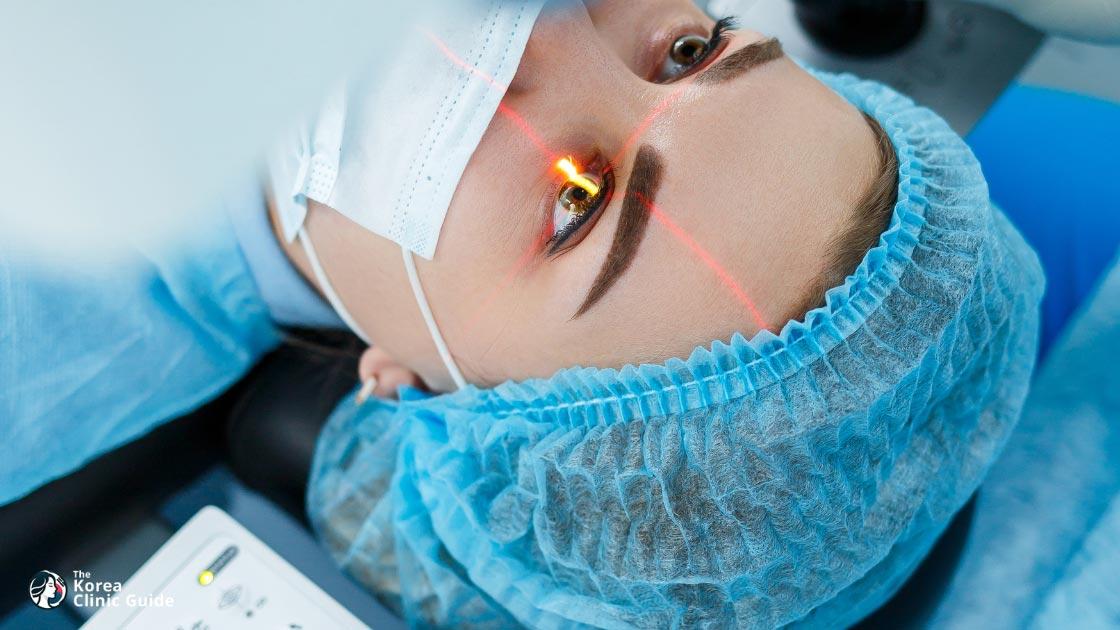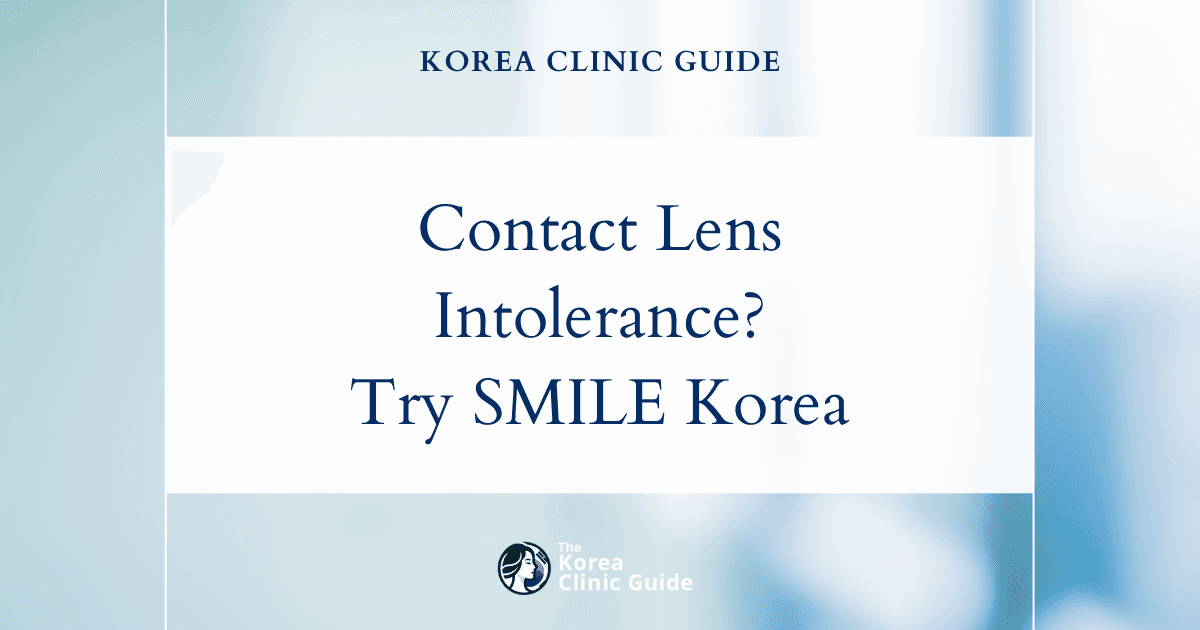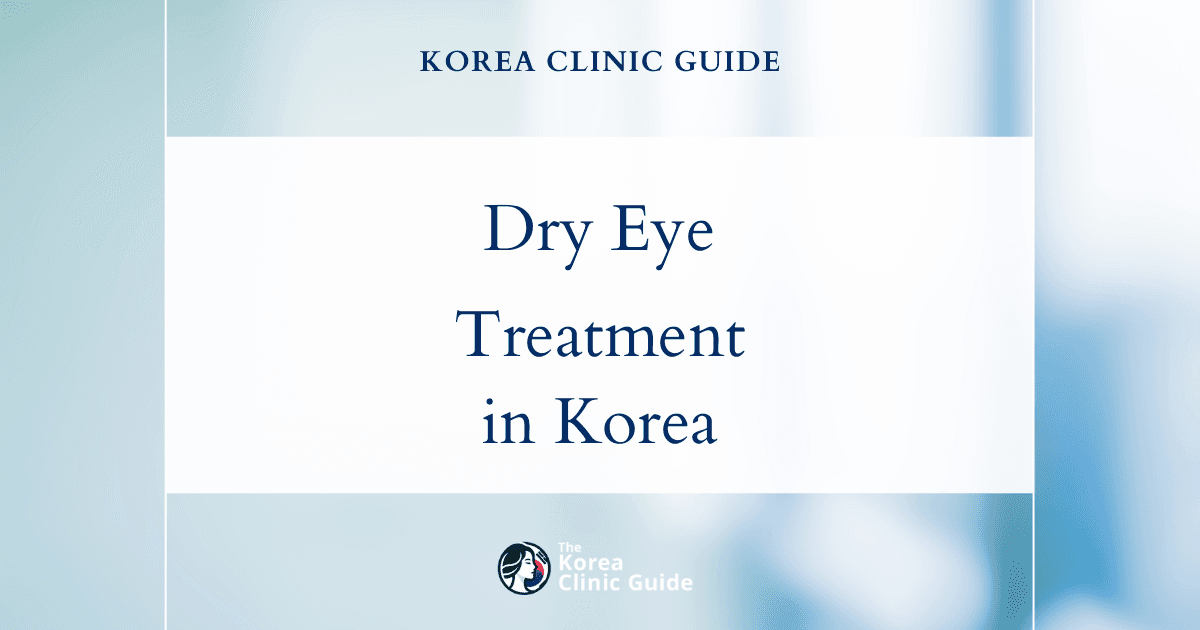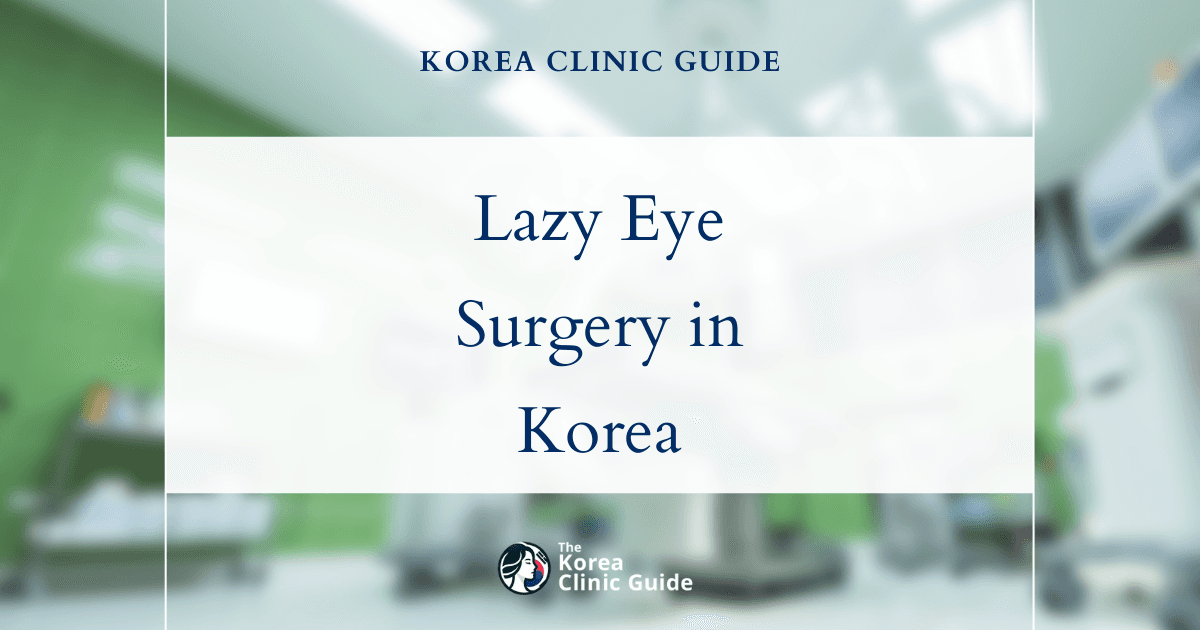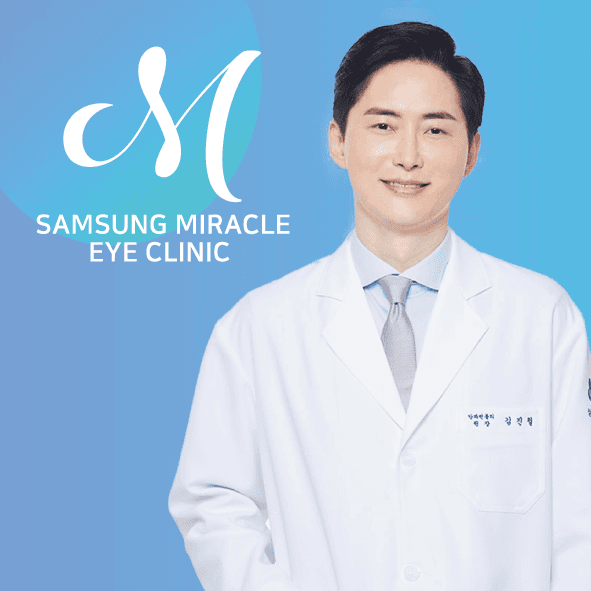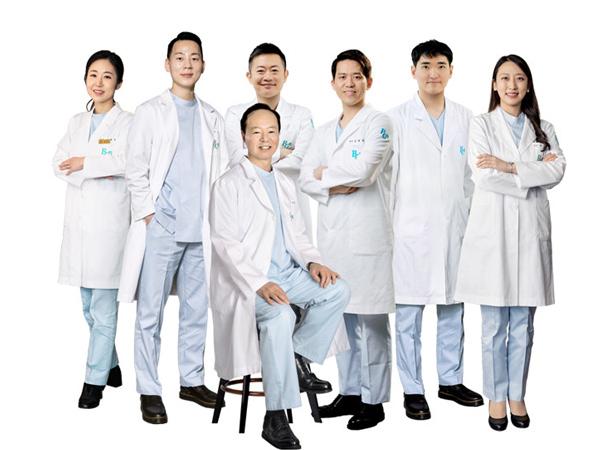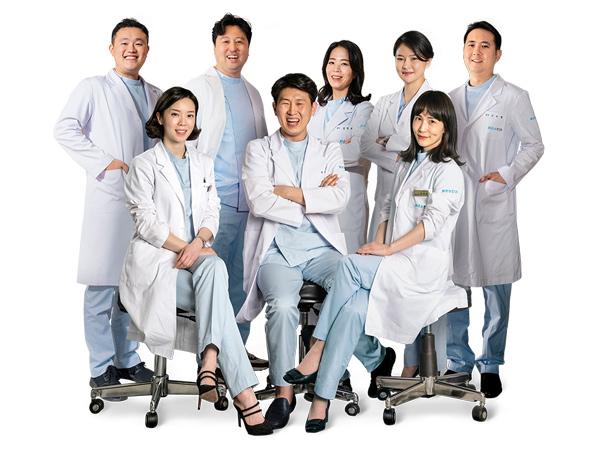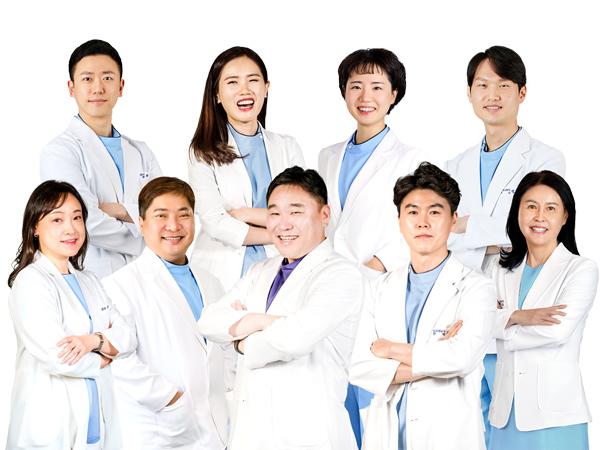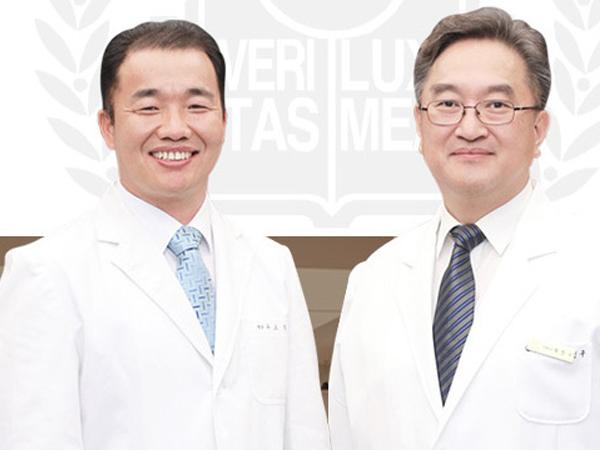Medical Tourism Blog
Cataract Surgery in Korea | Best Clinics, Costs, Procedure Types & More

Table of contents
Considering treatment in Korea? Everything you need to know e.g. — how to avoid scams, visas, interpreters, recovery tips — in our Medical Tourism Master Guide. Plan with confidence in minutes, not weeks!
Imagine regaining clear vision in just 20 minutes with the help of cutting-edge technology and expert care—could Korea be your go-to destination for cataract surgery? In this in-depth exploration, we'll uncover the process, costs, and top clinics in Korea for cataract surgery, equipping you with the knowledge to make a well-informed decision about your eye health journey.
What Is Cataract Surgery?
Cataract surgery is a medical procedure designed to remove the natural lens of the eye that has become clouded, typically due to aging, and to replace it with an artificial lens. The condition, known as a cataract, can cause blurry vision, glare, and halos around lights, significantly impacting a person’s quality of life. Here is a detailed explanation of the process involved in cataract surgery:
Diagnosis and Evaluation
Before surgery, a comprehensive eye examination is performed to confirm the presence of cataracts and to assess the overall health of the eye. This may include tests to measure the intraocular pressure, corneal curvature, and the shape and size of the lens. Ultrasound may also be used to determine the exact shape and size of the eye to help select the appropriate artificial lens.
Anesthesia
Cataract surgery typically involves local anesthesia to numb the area around the eye. This can be administered through eye drops or an injection. In some cases, the patient may also receive a sedative to help them relax, but they generally remain awake during the procedure.
Surgical Procedure
- Incision: A small incision is made at the edge of the cornea, the clear front part of the eye.
- Capsulorhexis: A circular opening is created in the lens capsule, which holds the cataract.
- Phacoemulsification: This is the most common technique used today. An ultrasonic device is inserted through the incision to break up the cloudy lens into smaller pieces. These pieces are then suctioned out of the eye.
- Insertion of the Intraocular Lens (IOL): After the cataract is removed, an artificial lens, called an intraocular lens (IOL), is inserted into the capsule. The IOL is made from materials like silicone, acrylic, or other plastic compositions and is designed to stay in the eye permanently. It helps to restore clear vision.
Types of Intraocular Lenses (IOLs)
The choice of IOL can vary depending on the patient’s specific visual needs:
- Monofocal IOLs: Provide clear vision at one distance (usually set for distance vision), with glasses often needed for reading.
- Multifocal IOLs: Designed to provide clear vision at multiple distances, reducing the need for glasses.
- Toric IOLs: Correct astigmatism along with cataracts.
- Accommodative IOLs: Designed to shift inside the eye to accommodate varying distances.
Recovery Process
Immediately after surgery, the patient is monitored for a short period before they can go home. Instructions for post-operative care include:
- Eye Drops: Prescribed to prevent infection and reduce inflammation.
- Protective Shield: To be worn while sleeping for a few days to protect the eye.
- Activity Restrictions: Patients are advised to avoid strenuous activities and heavy lifting for a short period post-surgery.
Follow-Up Appointments
Patients typically have follow-up visits the day after surgery, a week after, and then about a month after to ensure proper healing and to monitor for any complications. It can take several weeks for vision to settle completely.
Cataract surgery is one of the most common and successful procedures performed worldwide, offering significant improvements in vision and quality of life for the majority of patients.
Who Can Benefit from Cataract Surgery?
- Individuals with Blurry Vision: Cataracts can cause vision to become blurred or cloudy, making it difficult to see clearly.
- People Experiencing Glare from Lights: Cataracts can increase sensitivity to glare from lights, especially at night.
- Difficulty Performing Daily Activities: If cataracts are interfering with everyday tasks such as reading, driving, or recognizing faces, surgery may be recommended.
- Need for Clearer Vision for Medical Procedures: Cataract surgery may be advised if the cataract is making it hard for a doctor to treat or monitor other eye issues like age-related macular degeneration or diabetic retinopathy.
- Stable Vision Without Immediate Need: Surgery may not be urgent if vision remains quite good; some people might not need surgery for many years, if at all.
- No Harm in Waiting: Most cataracts do not harm the eye if left untreated for a period, allowing time to consider surgery carefully.
- Managing Other Eye Conditions: If having a cataract removed is necessary to better manage other eye conditions, surgery can be beneficial.
- Low Risk of Complications: Cataract surgery generally has low risks of complications and is generally safe, making it an option for many people with cataracts.
These points indicate who might be good candidates for cataract surgery, based on the effectiveness and safety of the procedure in addressing specific symptoms and medical needs.
Best Clinics in Korea for Cataract Surgery
Listed below are the best clinics in Korea for cataract surgery:
| Clinic Name | Key Features | Special Techniques |
|---|---|---|
| Samsung Miracle Eye Clinic | Samsung Miracle Eye Clinic, located at Gangnam Station, is a premier destination for presbyopia and cataract surgery in Korea, uniting highly experienced surgeons, advanced diagnostics, and a research-driven approach. The clinic’s proprietary Miracle Formula for lens power calculation—developed from more than 30,000 surgical cases and designed to achieve 0% refractive error, the gold standard in cataract surgery—has earned global recognition, including a presentation at the 2023 European Society of Cataract and Refractive Surgeons (ESCRS) and a related academic publication. With a full spectrum of premium intraocular lens options, a seamless one-day diagnosis-to-surgery system, and dedicated 1:1 care, Samsung Miracle Eye Clinic delivers precision, convenience, and consistently excellent outcomes for patients from Korea and abroad. | Miracle Formula lens power calculation (0% refractive error); 1:1 personalized care; One-Day System; Ambidextrous surgeons; ESCRS 2023 recognition; International Patient Team |
| Bright Eye Clinic | Bright Eye Clinic in Gangnam is the best choice for cataract surgery in Korea because it combines world-class technology with seasoned expertise to deliver consistently exceptional outcomes. The clinic performs cataract removal using the Lumera 700 microscope for precise, safe extraction of the cloudy lens, followed by tailored intraocular lens implantation with a wide range of premium IOL options to match each patient’s visual needs. Every case is guided by comprehensive pre-surgery examinations that optimize surgical planning and enhance safety and results, while experienced professionals oversee the entire process with meticulous attention to detail. Their leadership in advanced eye care is further demonstrated by a state-of-the-art refractive platform—including SMILE Pro with the VisuMax 800, SMILE LASIK, LASIK, and LASEK—reflecting a culture of innovation and precision that benefits cataract patients as well. This integration of cutting-edge equipment, individualized lens selection, and rigorous diagnostics attracts patients from around the world and sets Bright Eye Clinic apart as Korea’s premier destination for cataract care. | Lumera 700 microscope cataract removal; comprehensive pre-surgery examinations; a wide range of premium IOL options; state-of-the-art refractive platform including SMILE Pro with the VisuMax 800, SMILE LASIK, LASIK, and LASEK |
| BGN Eye Clinic Jamsil | BGN Eye Clinic Jamsil is a premier eye care center providing cutting-edge solutions for vision correction, including SMILE, LASIK, LASEK, SMILE PRO, ICL, and cataract surgeries. The clinic offers a full spectrum of techniques—from minimally invasive SMILE for myopia and astigmatism to LASIK and LASEK, with SMILE PRO delivering enhanced precision and faster recovery. For patients with high myopia or thin corneas, Implantable Collamer Lens (ICL) expands candidacy beyond laser options. Comprehensive care is supported by detailed pre- and post-surgery instructions tailored to each procedure. For age-related lens changes, BGN Eye Clinic Jamsil provides cataract surgery with monofocal intraocular lenses to remove cataracts and typically restore distance vision, as well as presbyopia surgery with multifocal intraocular lenses to address cataracts and provide multiple focal points for better near and distance vision. By aligning lens choice and procedure with each patient’s visual goals and ocular profile, the clinic offers a range of options to match specific needs. | SMILE, LASIK, LASEK, SMILE PRO, ICL, and cataract surgeries; pre- and post-surgery instructions; monofocal IOL cataract surgery; presbyopia surgery with multifocal IOLs |
Samsung Miracle Eye Clinic
Samsung Miracle Eye Clinic, located at Gangnam Station, is a premier destination for presbyopia and cataract surgery in Korea, uniting highly experienced surgeons, advanced diagnostics, and a research-driven approach. The clinic’s proprietary Miracle Formula for lens power calculation—developed from more than 30,000 surgical cases and designed to achieve 0% refractive error, the gold standard in cataract surgery—has earned global recognition, including a presentation at the 2023 European Society of Cataract and Refractive Surgeons (ESCRS) and a related academic publication. With a full spectrum of premium intraocular lens options, a seamless one-day diagnosis-to-surgery system, and dedicated 1:1 care, Samsung Miracle Eye Clinic delivers precision, convenience, and consistently excellent outcomes for patients from Korea and abroad.
Why Samsung Miracle Eye Clinic is a top choice for cataract surgery
- Miracle Formula precision: A proprietary, patented lens power calculation method built on 30,000+ cases, designed to achieve 0% refractive error and set a new benchmark in cataract outcomes.
- International recognition: Presented at ESCRS 2023 with a related academic paper, affirming leadership in presbyopia and cataract surgery technology.
- Premium IOL portfolio: Comprehensive choices including PanOptix and EDOF lenses, tailored to each patient’s vision goals and lifestyle.
- 1:1 personalized care: The same doctor conducts your examination, performs your surgery, and oversees recovery for consistency, accountability, and optimal results.
- One-Day System: In-house diagnostics combined with the Miracle Formula enable same-day evaluation and surgery without compromising accuracy.
- Ambidextrous surgeons: All surgeons operate with equal precision in both eyes, promoting symmetry, minimizing nasal bridge contact, and enhancing safety and comfort.
- International Patient Team: Dedicated support ensures quality, convenience, and clarity for patients traveling from overseas.
- Comprehensive services under one roof: Beyond cataract care, the clinic offers SMILE LASIK, LASIK/LASEK, presbyopia cataract treatment, intraocular lens insertion, dry eye treatment, Dream Lens (orthokeratology), and re-calibration surgery—reflecting broad surgical expertise and continuity of care.
- Convenient Gangnam Station location: Easy access in the heart of Seoul, supported by a team of highly professional medical experts and advanced technology.
You can check out their website here: Samsung Miracle Eye Clinic Website
Bright Eye Clinic
Bright Eye Clinic in Gangnam is the best choice for cataract surgery in Korea because it combines world-class technology with seasoned expertise to deliver consistently exceptional outcomes. The clinic performs cataract removal using the Lumera 700 microscope for precise, safe extraction of the cloudy lens, followed by tailored intraocular lens implantation with a wide range of premium IOL options to match each patient’s visual needs. Every case is guided by comprehensive pre-surgery examinations that optimize surgical planning and enhance safety and results, while experienced professionals oversee the entire process with meticulous attention to detail. Their leadership in advanced eye care is further demonstrated by a state-of-the-art refractive platform—including SMILE Pro with the VisuMax 800, SMILE LASIK, LASIK, and LASEK—reflecting a culture of innovation and precision that benefits cataract patients as well. This integration of cutting-edge equipment, individualized lens selection, and rigorous diagnostics attracts patients from around the world and sets Bright Eye Clinic apart as Korea’s premier destination for cataract care.
Find more about this clinic here: Bright Eye Clinic Website
BGN Eye Clinic Jamsil
BGN Eye Clinic Jamsil is a premier eye care center providing cutting-edge solutions for vision correction, including SMILE, LASIK, LASEK, SMILE PRO, ICL, and cataract surgeries. The clinic offers a full spectrum of techniques—from minimally invasive SMILE for myopia and astigmatism to LASIK and LASEK, with SMILE PRO delivering enhanced precision and faster recovery. For patients with high myopia or thin corneas, Implantable Collamer Lens (ICL) expands candidacy beyond laser options. Comprehensive care is supported by detailed pre- and post-surgery instructions tailored to each procedure.
For age-related lens changes, BGN Eye Clinic Jamsil provides cataract surgery with monofocal intraocular lenses to remove cataracts and typically restore distance vision, as well as presbyopia surgery with multifocal intraocular lenses to address cataracts and provide multiple focal points for better near and distance vision. By aligning lens choice and procedure with each patient’s visual goals and ocular profile, the clinic offers a range of options to match specific needs.
Find more about this clinic here: BGN Eye Clinic Jamsil Website
Getting Cataract Surgery in Korea
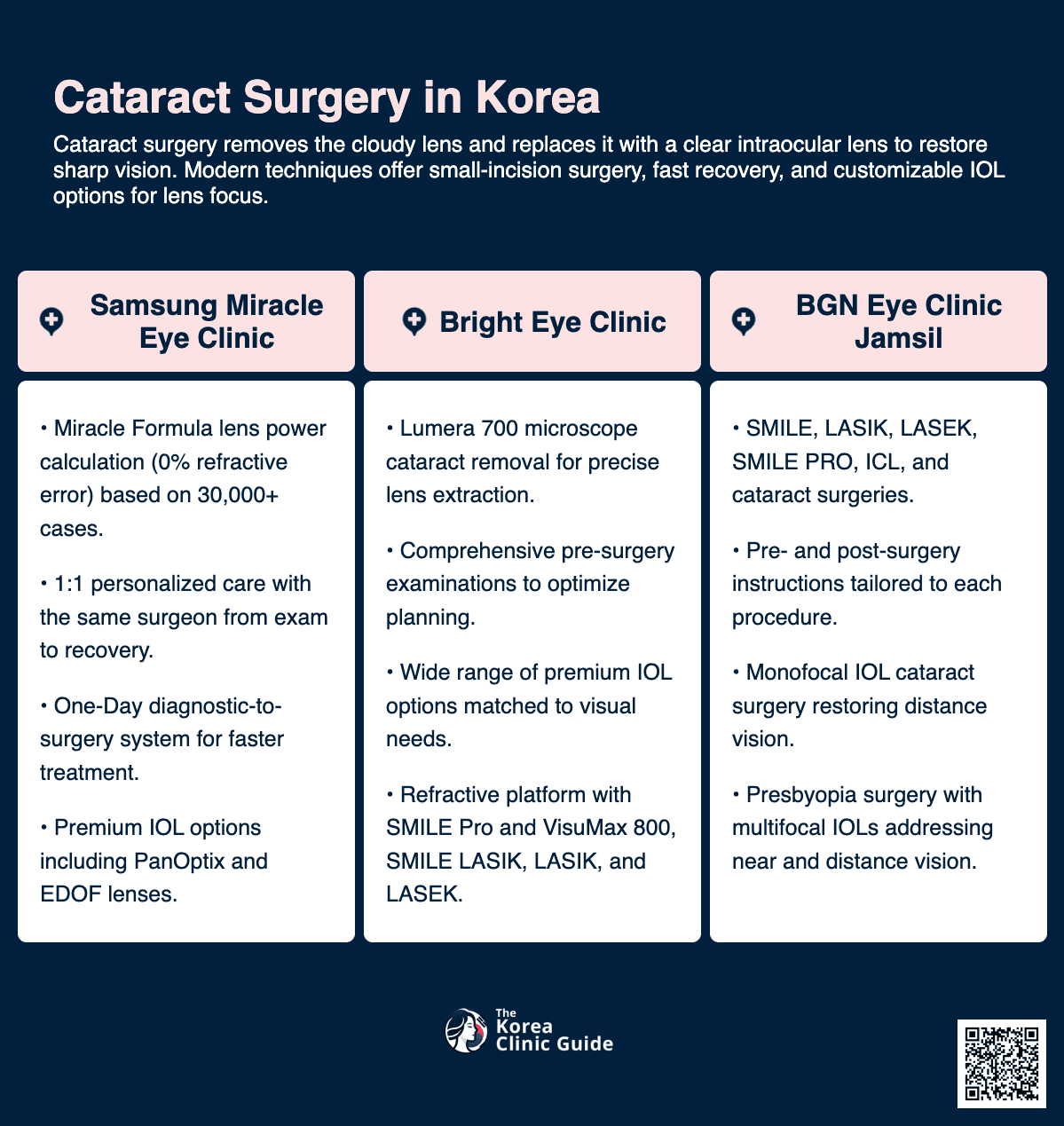
Cataract surgery is a highly efficient and common procedure aimed at treating cataracts, which are characterized by the clouding of the eye's natural lens. In South Korea, this procedure enjoys a cutting-edge status, thanks to the country’s advanced healthcare system and innovative medical technologies.
Initial Consultation
When opting for cataract surgery in Korea, the journey typically begins with an initial consultation. During this phase, patients undergo a series of comprehensive eye examinations, including visual acuity tests, slit-lamp examinations, and specific imaging tests such as optical coherence tomography (OCT) and ultrasound biomicroscopy. These tests help ophthalmologists to ascertain the severity and type of cataracts, enabling them to devise a tailored treatment plan.
Pre-Surgical Preparations
After the initial consultation, patients are given pre-surgical instructions. These typically include recommendations to avoid eating or drinking past midnight on the day of surgery and guidelines on the cessation of certain medications that might interfere with the procedure. Some clinics may also prescribe antibiotic eye drops to be used a few days before surgery to reduce the risk of infection.
Types of Surgery
Phacoemulsification
In Korea, the most commonly performed type of cataract surgery is phacoemulsification. This minimally invasive technique involves making a small incision in the cornea. An ultrasonic device is then inserted through this incision to emulsify (break up) the cloudy lens into smaller fragments, which are then suctioned out of the eye.
Femtosecond Laser-Assisted Cataract Surgery (FLACS)
Another advanced option available in Korea is Femtosecond Laser-Assisted Cataract Surgery (FLACS). This method uses a laser to create precise incisions and to soften the cataract, which makes the process of breaking up and removing the lens easier. This cutting-edge technology decreases the risk of complications and generally results in faster recovery times.
Intraocular Lens (IOL) Implantation
Once the cataract-affected lens is removed, an artificial intraocular lens (IOL) is implanted to restore clear vision. In Korea, patients can choose from various types of IOLs, including monofocal, multifocal, and toric lenses. The selection depends on the patient’s lifestyle, vision requirements, and any pre-existing eye conditions.
The Procedure
The cataract surgery itself usually takes about 15 to 20 minutes per eye. It is performed under local anesthesia, which means patients remain awake during the procedure but will not feel any pain. During the surgery, the ophthalmologist makes a small incision at the edge of the cornea, emulsifies and removes the old lens, and then inserts the prediscussed IOL. The small incision usually heals on its own without the need for stitches.
Post-Surgical Care
Following the operation, patients are moved to a recovery area where they are monitored for a short period. While most can leave the clinic the same day, they are advised to have someone accompany them for transportation. Post-surgical care includes prescribed antibiotic and anti-inflammatory eye drops to prevent infection and reduce inflammation. Patients are also given protective eyewear to shield their eyes from irritants.
Follow-Up Visits
Follow-up visits are scheduled to monitor the healing process. Typically, the first visit occurs within 24 to 48 hours post-surgery, with subsequent checks over the next few weeks. These visits allow the ophthalmologist to ensure the IOL is correctly positioned and that the patient is recovering as expected. Adjustments to vision correction, if necessary, are also discussed during these visits.
Recurrence and Long-Term Outlook
In rare instances, patients may develop posterior capsule opacification (PCO), sometimes referred to as secondary cataract. This can be easily treated with a quick, non-invasive laser procedure called YAG laser capsulotomy. With the high standard of medical care in Korea, most patients experience significantly improved vision and a high quality of life post-surgery.
| Procedure Price | Korean Won (₩) | USD ($) |
|---|---|---|
| Low Price | ₩1,000,000 | $700 |
| High Price | ₩14,000,000 | $10200 |
Exchange rate as of 2025-05-22: 1 KRW = 0.0007 USD
Please note that these prices are approximate guidelines and can vary significantly based on the clinic and your individual circumstances.
Cost of Cataract Surgery in Korea
Cataract surgery is a common medical procedure aimed at treating cataracts, a condition that causes the eye's lens to become cloudy, leading to vision impairment. The cost of this surgery varies significantly across different countries, influenced by factors such as healthcare infrastructure, insurance systems, and the overall cost of living.
Korea
In Korea, cataract surgery is known for its high-quality medical care and modern facilities. The cost of the procedure in Korea typically ranges from $1,500 to $3,000 per eye. This cost is often inclusive of pre-operative assessments, the surgical procedure itself, and post-operative care. Korean healthcare providers are known for their competitive pricing and efficient services, making it an attractive destination for medical tourists. Additionally, national health insurance can cover a portion of the costs for residents, further reducing out-of-pocket expenses.
United States
In contrast, the cost of cataract surgery in the United States is considerably higher. On average, the procedure can range from $3,500 to $5,000 per eye. This wide range typically includes related expenses such as surgeon's fees, anesthesia, and post-operative care. Factors like the type of intraocular lens (IOL) implanted and the complexity of the surgery can also influence the overall cost. While individuals with comprehensive health insurance might find significant portions of these costs covered, uninsured or underinsured patients may face substantial expenses.
Alternatives to Cataract Surgery
While cataract surgery is a common procedure to restore clear vision by removing a cloudy lens and replacing it with an artificial one, some individuals may seek alternative treatments. Here are three alternatives to consider:
1. Adjusting Prescription Glasses or Contact Lenses
For individuals with mild to moderate cataract symptoms, a new prescription for glasses or contact lenses can help improve vision. These corrective lenses can compensate for the changes in vision caused by cataracts, allowing for clearer sight. This approach can be effective for managing symptoms and delaying the need for surgery.
Benefits:
- Non-invasive and easy to implement.
- Can be updated as vision changes.
- Provides an immediate improvement in vision.
Drawbacks:
- Does not treat the cataract itself, only the symptoms.
- Over time, the effectiveness diminishes as the cataract progresses.
- Frequent updates to prescriptions may be necessary.
2. Use of Magnifying Lenses and Improved Lighting
Magnifying lenses and enhanced lighting can significantly help individuals perform daily tasks such as reading, cooking, and personal grooming. Brighter lighting can reduce glare and make things easier to see, while magnifying lenses can enlarge text and objects.
Benefits:
- Simple, cost-effective solution.
- Immediate, non-surgical improvement in visual clarity.
- Can provide significant help with specific tasks.
Drawbacks:
- Limited to certain activities and may not improve overall vision.
- Does not address the root cause of cataracts.
- May become less effective as the cataract progresses.
3. Medical Management and Lifestyle Changes
Some studies suggest that antioxidants like vitamin C and E, as well as a diet rich in fruits and vegetables, may slow the progression of cataracts. Additionally, managing other health conditions such as diabetes and avoiding smoking can positively impact eye health.
Benefits:
- Promotes overall health and well-being.
- May slow down the progression of cataracts.
- Non-invasive and can complement other treatments.
Drawbacks:
- Not a guaranteed solution to prevent or treat cataracts.
- May require significant lifestyle changes.
- Effectiveness varies among individuals.
While these alternatives may provide temporary relief and improve the quality of life, they do not eliminate cataracts. It's important to consult with an eye care professional to determine the best approach based on individual health and vision needs.
Conclusion
In conclusion, cataract surgery in Korea stands out as a compelling option for patients worldwide, thanks to its state-of-the-art medical facilities, highly skilled ophthalmologists, and competitive pricing. The country’s healthcare system ensures a seamless and efficient surgical experience, often complemented by advanced technologies and cutting-edge techniques that enhance both safety and recovery. As medical tourism continues to grow, Korea's commitment to excellence in cataract surgery makes it an attractive destination for those seeking to restore their vision and improve their quality of life. Whether it's the meticulous pre-surgical assessments or the comprehensive post-operative care, Korea sets a high standard in eye health, offering hope and clarity to countless patients.
